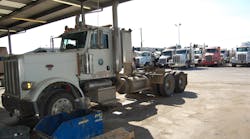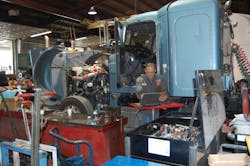We all know that finding workers to serve as truck drivers and diesel technicians is critical to keeping the motor industry moving. Indeed, fleets can buy top-flight trucks and build ultra-modern repair shops and freight terminals, but without workers, no cargo will move.
What’s interesting to note, though, is that this need for “talent” as it were is forcing businesses of all stripes to change how and where they locate their operations. Like trucking, many other industries are discovering that without the right kinds of workers, they simply can’t do business.
A new white paper from the commercial real estate firm CBRE Group, Inc., shows how this need for workers is altering a lot of time-honored practices as the age-old adage “location, location, location” is now being replaced with “talent, talent, talent” as the primary driver behind real estate decision-making.
According to the paper, the first in a CBRE Thought Leadership series on workplace performance, “talent availability” is now becoming a major criterion when it came to selecting a market for workplace location.
This “lead-with-labor” approach allows companies to maximize talent recruitment, while also achieving potential cost savings by locating in secondary markets where real estate costs are lower, and where talent is “clustering,” noted Kristin Sexton, managing director of labor analytics for CBRE.
“If an organization is able to create a business strategy based on where it needs talent, possibly relocating certain operations to secondary markets, they can reduce both real estate costs and the labor costs compared to major markets,” she said.“While many companies still prefer to locate in gateway cities for client access, proximity to suppliers and major transit options, many of these markets are already tapped in terms of labor and many of our clients are asking what lies beyond, what is the next tier of markets in which to find talent,” added Mark Seeley, CBRE’s senior vice president of labor analytics.
Moreover, given the reduced competition, such markets allow strong companies to become the clear “preferred employer,” he noted.
At the core of this “war for talent” are millennials, Seeley pointed out, as companies across all industries strive to create workplace environments that attract this critical, yet “still somewhat perplexing,” next generation of talent.
While conventional wisdom suggests that millennials are obsessed with living and working in the center of big cities, a recent global survey of more than 13,000 millennials commissioned by CBRE showed that three-quarters of employed millennials work in large towns or cities, split two-to-one in favor of central rather than suburban locations.
The vast majority of those remaining millennials still work in small- or medium-sized towns, the firm found.
Further, when asked to rate each type of location according to its appeal as a place to work, the millennials surveyed said they preferred central city locations—but not overwhelmingly, as suburban and small- to medium-sized towns ranked a close second with 55% saying they find these markets “fairly” or “very” appealing.
Even a third of millennials would be happy working in a business park or campus setting, and over a quarter find a rural location appealing, according to Christopher Perri, senior managing director of CBRE’s global workplace solutions business.“It’s about cost, community and cultural values,” he explained. “As young tech leaders and other millennials transition into family-oriented phases of their lives, there’s going to be more of a need to get out of the city and find alternative locations where they can still have the ‘cool factor’ but at a manageable cost profile and in a place where they want to raise their kids.”
Does this offer an opportunity for trucking? Maybe, especially since according to the American Trucking Associations (ATA) annual Freight Forecast, overall freight tonnage will grow a total of 35% between 2016 and 2027, with freight moved by trucks growing slightly less at 27% during that time period.
Specific to trucking, TL volumes will grow 2% annually between 2016 and 2022 and 1.6% per year after that until 2027, according to ATA’s projections, while LTL volumes will grow 3% per year through 2022 and 2.8% from 2023 to 2027.
Private carrier freight volumes will grow 2.3% annually until 2022 and 2.1% each year over the next five years, the trade group noted.
So the business will be there and trucking will need freight “hubs” throughout the U.S. to manage it – especially in more rural areas, which, apparently, seems to be more appealing to millennials.
Could this trend, then, help the industry raise its profile among younger workers? We’ll see.





